The post Introducing the OneDose and ESO EHR integration appeared first on ESO.
]]>Both Hinckley Medical and ESO Solutions are committed to using data and technology to empower EMS agencies to provide the best possible outcomes for patients in their community, which makes this integration a natural next step for both companies.
By integrating with OneDose, clinicians using EHR will now be able to dose and document all patient treatments, interventions, and protocol adherence directly into ESO. This will allow critical NEMSIS (National EMS Information System) data – such as patient weight, medications, and treatment – to automatically sync, eliminating duplicate documentation and ensuring precision.
OneDose is designed to eliminate the cognitive load of having to calculate dosing in high stress situations by providing all medication and equipment necessary in just a click, along with timestamped treatments for more accurate record keeping.
In addition to real-time documentation, customizable protocols, and in-app notifications, here are some key OneDose benefits coming to ESO EHR:
- Instant calculation of necessary medications, equipment, and more
- Comparison of pre-scene estimates with point-of-care actual weights
- Full access to your organization’s protocol
- Comparison of estimated versus actual weights of medication dosages
- Automatic patient interaction history tracking
- One-stop-shop for management of medication calculations, equipment sizes, and provider guidelines
- Updated push protocols to team members with receipt verifications
These new benefits combined with ESO EHR’s concise documentation, easy-to-read dashboards, and quickly accessible patient records will allow providers to keep their focus on their patient while accessing vital patient information and specialty forms that inform care in real time.
To learn more about the benefits of this powerful integration, check out the full press release from OneDose.
To learn more about ESO EHR and how it can improve critical data capture for your team, check out the product page.
The post Introducing the OneDose and ESO EHR integration appeared first on ESO.
]]>The post ESO Auto-Generated Narratives: Tech that follows your lead appeared first on ESO.
]]>“At ESO, we are committed to being responsible, ethical, and transparent as we walk through this artificial intelligence journey together.”
– Dr. Brent Myers, Chief Medical Officer at ESO
Filling out patient care reports has always been an important, yet time-consuming, part of an EMS provider’s shift. Every field filled in. Every note written. And then, the narrative – summarizing the whole event in a readable, detailed story.
With ESO, that story writes itself (when you ask it to).
This month, ESO released the much-anticipated Auto-Generated Narrative feature to ESO Electronic Health Record (EHR) customers, transforming documentation in first response as we know it. By drawing directly from structured data already entered in the record, ESO’s Auto-Generated Narrative writes a full narrative summary ready for review.
EMS organizations have the power to opt into this new feature, helping their crew complete reports faster – without compromising accuracy or control.
“The efficiency improvement we’ve seen with the ESO Auto-Generated Narrative has been significant, saving about 20 minutes per report. From a quality management perspective, it simplified the administrative function. From the crew’s side, it’s obvious it shortened their documentation time. They’re still reviewing every narrative, and so far, I don’t think we’ve had one that hasn’t been touched. This feature is a game changer that paints an accurate picture of the care they provided.”
– Jeff Sadtler, Chief of EMS and Fire Services at West County EMS and Fire Protection District
It’s already saving time and making an impact.
ESO’s Auto-Generated Narrative was beta tested by about 50 EMS organizations across the country. In testing, this feature reduced total documentation time by up to 80%. On average, crews also saw a 30% drop in time to lock a patient record.
This capability, which is intentionally optional, can now be enabled organization-wide for EHR customers at no additional cost. Once activated, providers complete the chart as usual, click a button to generate the narrative, and finalize it after making any needed edits.
If you’re already an ESO EHR customer, check out our quick-start guide for instructions on how to activate Auto-Generated Narrative.
Embracing AI with intention
Still in its infancy, AI has already proved itself to be a powerful, efficient tool innovating various industries. At ESO, we are focused on applying it thoughtfully, in ways that help those on the front lines. That’s why Auto-Generated Narrative is designed with transparency, reliability, and provider control in mind.
The automated narrative draft is created based only on what has been captured discretely into the chart. Providers retain full control of the narrative throughout the process.
Auto-Generated Narrative is not just automation for the sake of it – it’s a direct response to how our customers work and what they need: more time for patient care, fewer hours spent documenting it, and confidence that records are complete, consistent, and accurate.
What you should know about ESO Auto-Generated Narrative
- Available now for all ESO EHR customers at no additional cost
- Accessible in EHR iOS, EHR Windows mobile and EHR Web
- Activated by your organization’s admin in settings
- Includes an inline prompt for providers to review and edit the draft before finalizing
Ready to auto-generate your patient care narratives?
Auto-Generated Narrative is just one of ESO EHR’s new innovative features aimed at empowering first responders in better caring for their communities. New features such as Critical Care workflows and the recently released Longitudinal Record feature support EMS organizations in alternative forms of care they provide to their communities along with giving an overall more holistic patient overview. You can learn more about the new and improved Electronic Health Record, now including Auto-Generated Narratives, here.
See how ESO Auto-Generated Narrative can transform documentation for your team by signing up for a demo to see the benefits live.
The post ESO Auto-Generated Narratives: Tech that follows your lead appeared first on ESO.
]]>The post (Q1/2025) ESO Updates: Quarterly Product Enhancements appeared first on ESO.
]]>Content applicability by product
| Building Blocks | EMS | Fire | Hospital | State |
| ESO Suite | Login Update | X | X | X | X |
| Fire Incidents | NERIS Beta | X | |||
| EHR | iOS General Availability | X | |||
| EHR | Stryker LIFEPAK 35 General Availability | X | |||
| Logis Dispatch / EHR | Integrations for MIH | X | |||
| Patient Registry | Bulk Procedure Entry | X | |||
| Patient Registry | FHIR Integration for Cerner | X | |||
| PM | Compensation (Payroll) Update | X | |||
| Assets | Preventive Maintenance Foundations | X | X | ||
| ODL | Content Development and GenAI | X | X | X | X |
| Data Platform | Sisense upgrade | X | X | X | X |
| Data | Direct shares | X | X | X | X |
| Insights | Global dashboards | X | X |
ESO Suite Login Update
We are excited to unveil the latest update to the ESO Suite Login. This enhancement streamlines the login process, offering you a more intuitive and secure experience. With improved authentication methods and faster access, you can now effortlessly log in to the ESO Suite, ensuring less time spent on administrative tasks and more time providing quality care.
This update reflects our ongoing commitment to optimizing user experience and enhancing the efficiency of healthcare operations. Stay tuned for more updates as we continue to innovate and improve our product offerings to better serve the healthcare community.
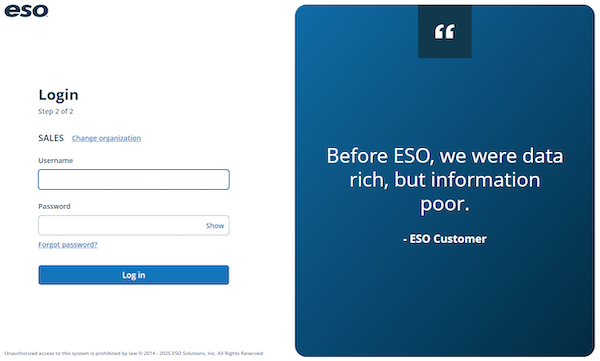
Fire Incidents | ESO NERIS Beta Program
NERIS Fire Incidents Beta Program
In early March, we launched our closed beta program, which allows a select group of agencies to access, train, and experience the brand new NERIS-compliant Fire Incidents. In turn, the agencies in the beta program are providing valuable feedback to help us refine and improve the application further. The beta program includes features such as progressive disclosure, rich text editing for narratives, and GIS integration for address fields. We have encouraged the agencies involved to include both administrators and field responders in the testing process to gather diverse feedback and ensure the application meets the needs of all users in their transition to NERIS.
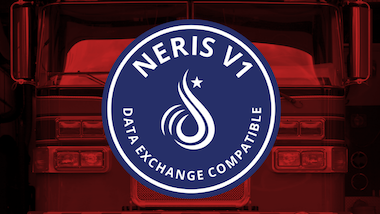
NERIS Data Exchange Compatibility Badge
We are proud to announce that ESO has officially received our NERIS Data Exchange Compatibility Badge, signifying that ESO Fire Incidents meets all new NERIS compliance requirements while maintaining ease of use, data accuracy, and intuitive reporting.
This badge signifies that you can feel confident in trusting ESO Fire Incidents to provide everything you need to smoothly transition to NERIS and stay ahead of the biggest change in fire reporting in the past 50 years. Moving forward, ESO will continuously enhance Fire Incidents while further integrating it with other applications within the ESO suite to ensure a comprehensive solution that continues to support the new NERIS standard while enhancing application capabilities and user experience.
EHR | iOS General Availability
EHR for iOS is now available to all, marking a major step forward for ESO. Designed to provide you with the proper tools to enhance patient care and quickly enter quality data, this latest release introduces Longitudinal Record (LR), Siri Integration, and Mobile to Mobile (M2M).
Built with the needs of first responders in mind, EHR for iOS offers a user-friendly interface, seamless integration with EHR Web and Windows Mobile, and robust security features to ensure patient data is protected.
Here are some key features to look out for:
- CAD & Cardiac Monitor Integration: The application supports integration with cardiac monitors and CAD systems, enhancing your ability to swiftly monitor and respond to patient needs. Supported cloud monitor integrations include Zoll Online (X Series), LIFENET System (LP 12, 15, and 35), and Philips IntelliSpace Corsium (Tempus ALS).
- Robust Security: EHR for iOS supports multi-factor authentication (MFA), Single Sign-On (SSO), and 6-digit Numeric PINs to support multiple crew members.
- Mobile Device Management: Agencies leveraging Mobile Device Management (MDM) to manage iOS devices in the field can now do so with a few additional steps.
- Medication Scanning: By using the device camera, patients’ medications can be added to their Medication list by scanning the prescription labels or lists of medications, saving your team precious time.
- Mobile to Mobile (M2M): Just like M2M is available with our Windows Mobile application, the EHR for iOS application supports the ability to send or receive data to and from a Windows Mobile or iOS device.
- Longitudinal Record (LR): Similarly to EHR for Web, EHR for iOS leverages our new Longitudinal Record feature to quickly look up and match patient information.
- Siri Integration: Activate Siri for hands-free entry of incident times and vital signs, as well as document flowchart treatments. It’s as simple as saying, “Hey Siri, capture pulse rate in EHR.”
Now available in the App Store, EHR for iOS has undergone rigorous testing and validation to ensure it meets the highest standards of performance and security, saving your team precious time in the field.
EHR | Stryker LIFEPAK 35 General Availability
Our latest integration with the Stryker LIFEPAK 35 monitor/defibrillator is now available for all and is designed to provide an enhanced user experience, boosted productivity, and access to the latest technologies. Thank you to the beta agencies who helped us ensure that this integration was ready for prime time.
Key Features of the LIFEPAK 35 Integration with EHR:
- Seamless Connectivity: Enjoy a user-friendly interface that makes it easy to connect Stryker LP 35 with ESO EHR. Experience improved performance that ensures smooth, uninterrupted data flow, allowing you to complete tasks more efficiently.
- Improved Patient Care: Focus on delivery of care with the ability to import data from the monitor to EHR, reduce documentation time, and improve your data’s accuracy.
- Dependability of Data: Use the strength of two trusted and dependable platforms in one high-quality solution.
Why Choose the LP 35 Integration?
Our integration with the Stryker LP 35 is designed to meet the needs of professionals who require reliable and efficient tools to manage their workflow. Whether you’re a responder in the field, an administrator, or a researcher, this integration offers you the functionality you need to be successful.
Patient Registry | Bulk Procedure Entry
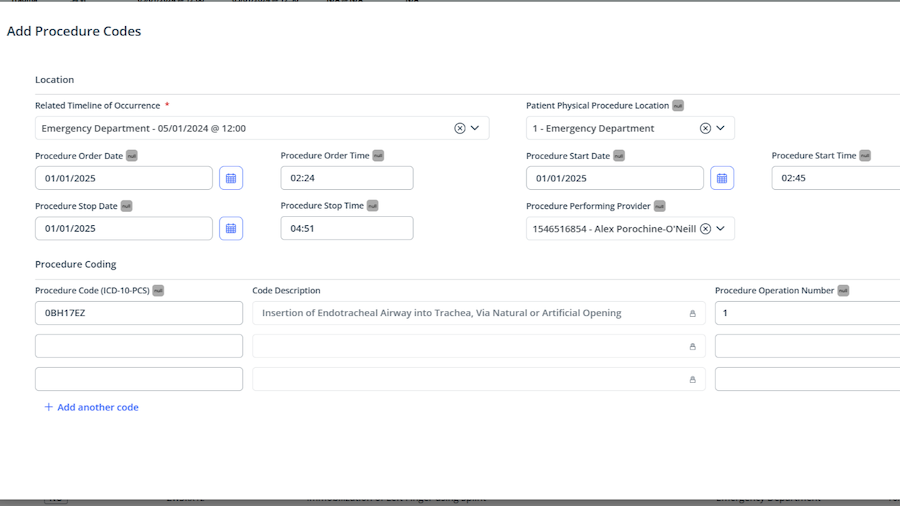
Through customer feedback and collaboration, ESO determined that enhancing bulk procedure entry was critical to the Patient Registry user experience. This update will significantly streamline daily operations by allowing your team to more efficiently manage and execute large volumes of procedures, reducing the administrative burden while improving workflow efficiency.
By automating routine tasks and enabling bulk processing, healthcare facilities can focus more on patient-centric activities, ensuring timely and accurate delivery of care. So far, we’ve already seen a 15% reduction in time on tasks and an 81% reduction in clicks to complete tasks. We hope that you find that this enhancement not only optimizes your resource utilization but also contributes to overall better patient outcomes and product satisfaction.
Patient Registry | FHIR Integration for Cerner

Building upon Patient Registry’s FHIR data integration with Epic, we extended the integration with Cerner to not only streamline your workflows but also enhance the overall efficiency and quality of your data. An ESO Admin page has also been launched that will allow facilities to self-configure their FHIR URLs and custom MRN identifiers.
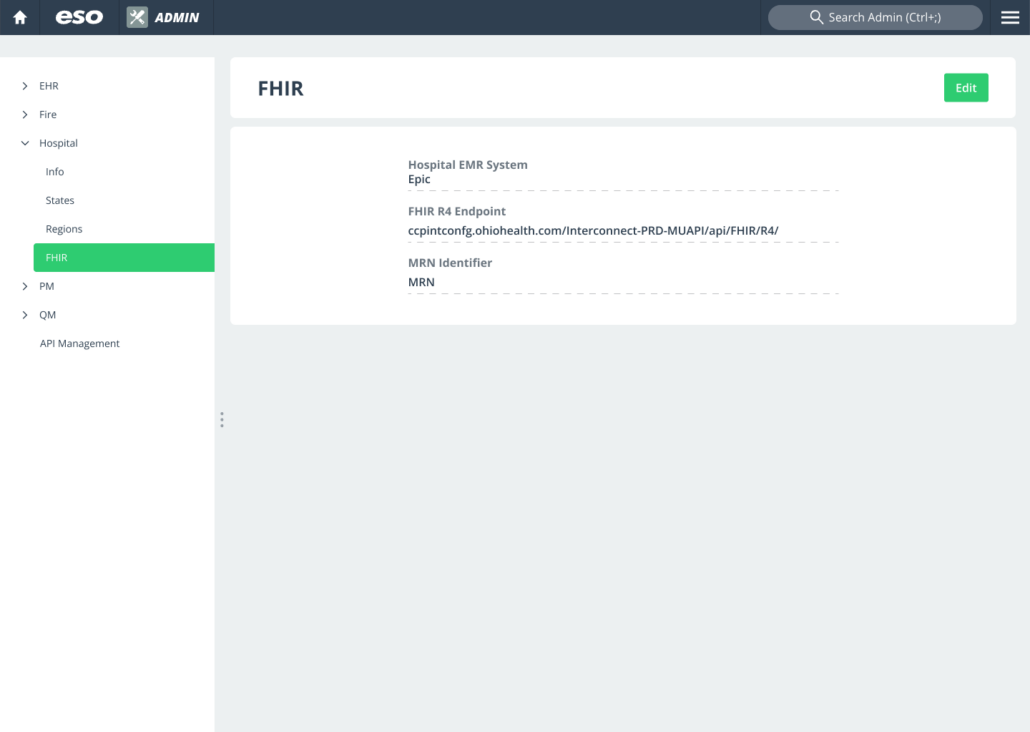
Stay tuned for more exciting updates on how the FHIR integrations will evolve and transform your Patent Registry experience!
Patient Registry | “No Bloods Given” Button
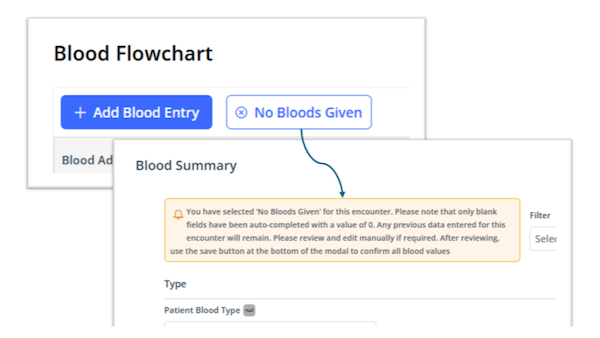
The new “No Blood” button feature on the “Blood” Flowchart section allows your team to directly interact with the “Blood Summary” modal without manually entering data field by field. This new update takes a process that originally took over 20 clicks down to just 2, saving your team vital time.
This feature was highly requested by Registry users who need to capture data for total blood and blood within 4 hours and has already been incredibly popular with users.
PM | Compensation (Payroll) Update
Development of the Compensation module is in full swing. This new module will cover payroll for volunteer, combination, and pay-per-call departments and can be used in conjunction with the Pay Rates feature. By enabling the Compensation module, organizations can integrate Fire Incidents into PM, along with creating and editing compensation definitions, adding and editing rules, managing employees, and exploring the pay period history page.
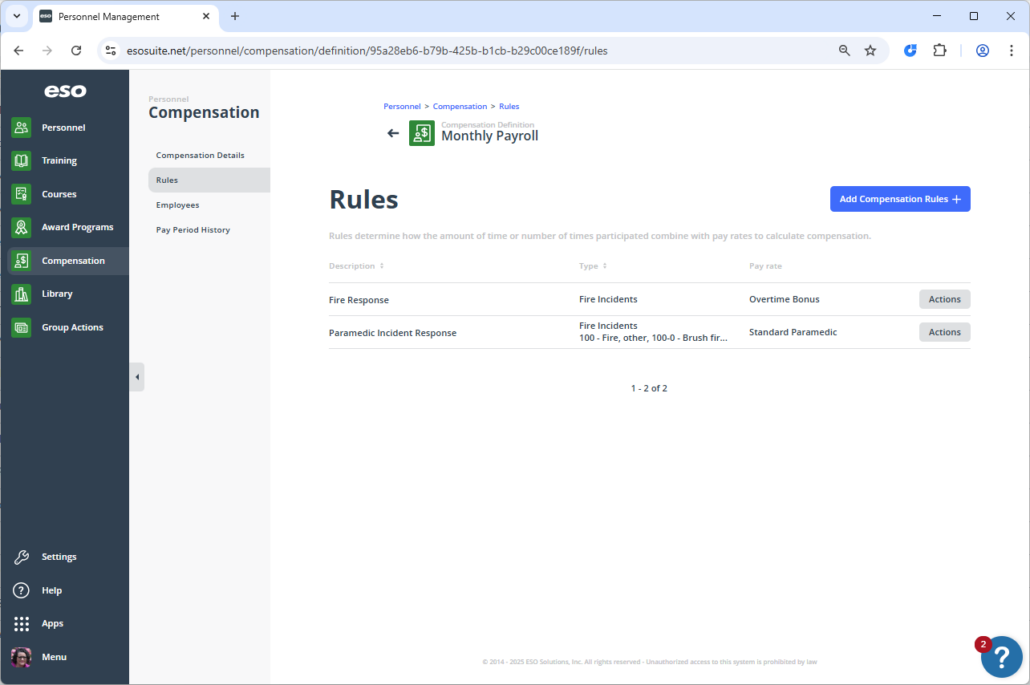
More exciting news: after our next release, your organization will be able to see live data on the pay period history page, view employees within the pay period, and dive into the calculation details, which means you can complete the entire cycle for rules based on Fire Incidents, right up to the export and finalization process. Stay tuned for more updates.
Assets | Preventative Maintenance Foundations
Asset Management has gone through several foundation updates to deliver a brand new end-to-end preventative maintenance functionality. Here are the updates that happened in Q1:
- Meter Readings in Equipment Profiles: Similar to what’s available in vehicle profiles, meter reading fields were added to the equipment profile to capture various readings.
- Maintenance Requests: When closing a maintenance request, you can now add current meter readings to the ticket, which will update the asset’s profile.
- Asset Spreadsheet Upload: Meter reading fields have been added to the upload spreadsheets to support importing current meter readings when onboarding to Assets.
These updates will allow you to enter meter readings in four different ways: by checklist submissions, maintenance requests, spreadsheet uploads, or direct edits to the asset profile.
The Maintenance Overview page has also been updated to support end-to-end preventive maintenance workflows. With the addition of Status, Complete Date, and Request Type columns, you can now quickly reference existing open requests and see whether a request was manually created or auto-generated.
Keep an eye out for the release of Maintenance Schedules, which will allow you to set recurring maintenance schedules based on odometer, engine hours, calendar, and more!
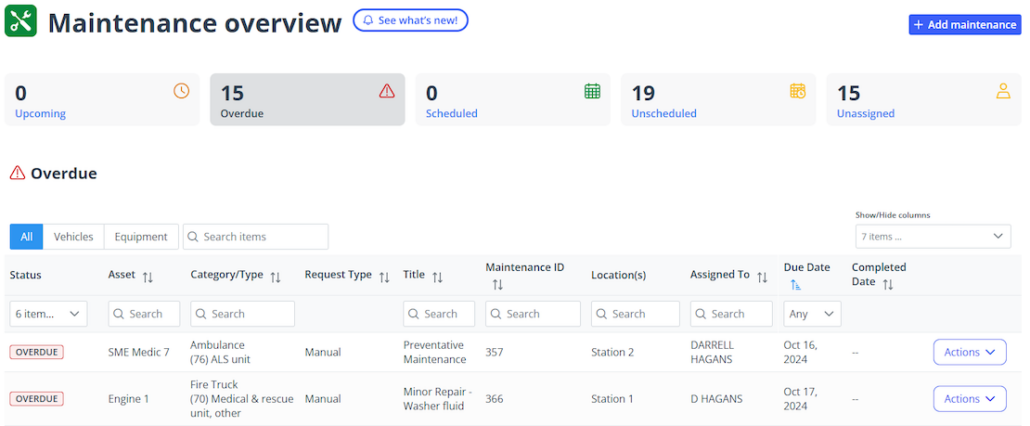
Data | Snowflake Direct Shares
ESO has released its latest data reporting and access capability – Snowflake Direct Shares. This new capability will allow you to seamlessly integrate ESO Suite reporting data into your own existing Snowflake account, as well as give you the capability to create customized queries and exports and combine ESO data with internal sources using your own data reporting tools. Eliminating the need for intermediary ETL tools, APIs, or other reporting platforms simplifies the data reporting ecosystem and reduces the management of additional credentials and access points.
Insights | Global Dashboards
A number of Global Dashboards were updated and released throughout Q1, but there are two groups of Dashboards we are particularly excited about:
EHR | WEMSIS Demographic Information Reporting Dashboards
A series of seven dashboards, the WEMIS Demographic Information Reporting Dashboards, are aimed at supporting WA customers who are required to report annual demographic data to WEMSIS. More information on the measures and submission can be found here.
State Repo NEMSIS 3.5 | California Core Test Measures
Five Global dashboard templates were released to support customers in CA regions and agencies by more accurately reflecting the specifications for the 5 CA core test measures for 2024 data (AIR-1, AIR-2, AIR-3, PED-4, & TRA-3). You can get more information here.
Cross-Product/ESO Suite | In-App Enhancements
In Q1, our UX and Personnel Management team launched our Pilot Ideas Portal in Personnel Management to make it even easier for our community to share feedback and gain insights into current product roadmap ideas. This portal is designed to enhance the collaboration process and make it easier for our product team to understand and solve our customers’ pain points. The pilot was a huge success with high adoption and engagement along with positive feedback. Last quarter alone, ESO received 2198 enhancement suggestions from our community, which is an increase of 33.4% from Q4!
Thank you for your continued hard work and dedication in helping us create tools to better support your team. We will continue to email you updates when viable ideas progress into the discovery, design, and development stages.
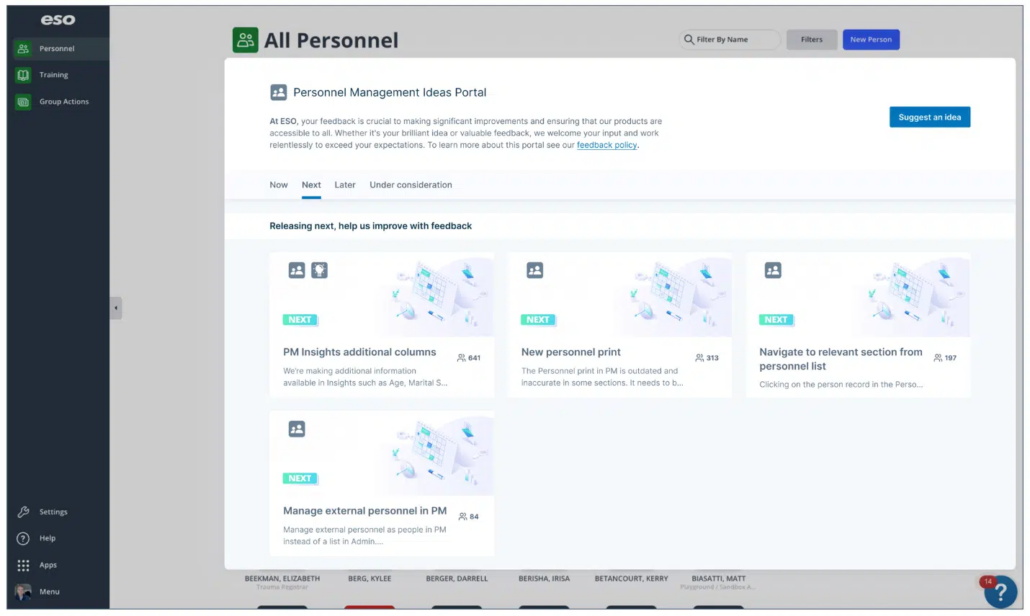
Stay turned for further rollout in the ESO Suite!
What to expect next
Here are a few more exciting enhancements currently in the works. Please stay tuned for release notes, but here’s a sneak preview of a few updates and enhancements we have planned:
EMS
- AI Generated Narrative for non-transport dispositions
- Additional availability in Windows mobile
- Our new iOS application
- Optional use of either SOAP or DCHARTE format
- NEMSIS critical patch for gender to maintain compliance with NEMSIS and presidential executive order
- New EHR Partner API
- Agency custom forms for beta
Fire
- NERIS
- GIS/Mapping for Properties Grid
- Inspections print and email updates
- Update to Hydrants for bulk actions
Shared Apps
- Preventative maintenance schedules
- General availability of compensation
Hospital
- Patient Registry has some exciting new features planned for Q2 (and beyond), including:
-
- An encounter dashboard for real-time reporting and operational workflow management.
-
- Patient summary export for generating templated reports for offline consumption.
-
- Integration with ACS to facilitate real-time encounter submissions.
State
- In Q2, we embark on a journey to transform the way State customers manage their providers, agencies, vehicles, and education with a new regulatory application. Leveraging the power of AI and development tools, we are poised to accelerate delivery, ensuring that our solutions not only meet but exceed your expectations.
Cross-Product / ESO Suite
- Dashboard will be mobile responsive
- The first release of our new Query Builder
- An Ideas Portal launch in all product resource centers
About Product Management at ESO
The ESO Product Management team creates the Product Roadmap, informing the products, features, and functionality we will build next. Through daily collaboration with support, sales, customer success, industry experts, and most importantly, customers like you, our team works hard to create the best apps possible for advancing our mission of improving community health and safety through the power of data.
Over the past year, we’ve invested in world-class tools that allow us to capture customer product feedback at scale and, in turn, make more informed roadmap decisions. These tools enable us to quickly test ideas in order to deliver features that are most valuable to you. We value your input and hope you continue to engage with us through our continuously expanding in-app capabilities.
The post (Q1/2025) ESO Updates: Quarterly Product Enhancements appeared first on ESO.
]]>The post Emergency Services Are Evolving – So is ESO EHR appeared first on ESO.
]]>The time for this shift is undoubtedly now: Resources are limited, providers are burnt out, communities are changing, and call types and volume require new, innovative ways to respond.
Introducing technology from call to care: An innovative way forward
Launched in early 2025, the updates to ESO’s core EHR platform are designed to help organizations not only keep up with the industry’s changing demands but stay ahead of the curve through connected systems, higher quality documentation, increased personnel readiness, and more supportive revenue operations. These updates come following the integration of Logis’ Dispatch and Billing solutions. The powerful connections between dispatch, incident reporting, and health records mean agencies can improve financial outcomes, prioritize dispatch, and build a comprehensive view of patient care – all in one platform.
With everything our customers have come to love about ESO EHR – including the high-quality documentation, simplified reporting, and intuitive workflows – the application now includes:
-
- Longitudinal Record views
- Enhanced functionality to support MIH processes and encounters
- Critical Care workflows and forms
- Native iOS application
- ESO Insights with Global Dashboards and Benchmarking
Already an ESO EHR user? If you’re ready to explore these updates, please get in touch.
These upgrades to the EHR platform will allow your agency to:
Get a more dynamic, patient-centric view of your data
Instantly access vital patient data, including historical records during care, for a more holistic view of patients’ long-term health. Plus, visualize and leverage data across all product verticals with ease, so you can efficiently meet your changing needs.
Support Mobile Integrated Health or Community Paramedicine processes
With upgraded, real-time access to patient history, and streamlined, modern Mobile Integrated Health features, you can better support the emergent and non-emergent calls in your community.
Improve resource allocation
ESO EHR is fully interoperable, connecting to Computer-Aided Dispatch (CAD), Cardiac Monitors, Billing, and pre-hospital and hospital systems, so you can transfer patient care data across mobile applications. This not only streamlines care and tedious duplicative entry but also sets up smarter workflows for predicting where resources are best sent.
Provide care from anywhere
The iOS application for ESO EHR is a game-changer, with features such as speech-to-text, smarter multitasking, a scanning solution, and more – it also allows you to use the platform on any iOS device, even offline. Since your data is saved in real time, upon reconnection, you can be sure that no insights are lost in transit. Paired with the new Critical Care workflows, you can care for your most vulnerable patients regardless of location.
Improve overall outcomes
ESO Insights and comprehensive global reporting with benchmarks help your team quickly identify trends, gain visibility into areas of improvement, and track critical care performance.
Why do these updates matter?
Today’s patient-centric care relies on connected information across each stage of a patient’s experience. For cutting-edge EMS agencies today, documentation is a means to a mission-driven end: fully understanding your patients and resources to provide the best possible care to meet your community’s individual needs.
And most importantly, technology should evolve with a dynamic industry – which is why you’ll soon see even more new functionalities in EHR, including GenAI Narrative – an auto-generated narrative feature, additional customization, and even more interoperability in the future.
If you’re interested in upgrading to EHR and equipping your team with the tools they need to transition into this next evolution of their role, sign up for a free live demo.
The post Emergency Services Are Evolving – So is ESO EHR appeared first on ESO.
]]>The post (Q4/2024) ESO Updates: Quarterly Product Enhancements appeared first on ESO.
]]>Content Applicability by Product
| Building Blocks | EMS | Fire | Hospital | State |
| EMS | Shock Index | x | |||
| EHR | iOS Beta Release | x | |||
| EHR | Stryker LP35 Beta | x | |||
| EHR | MIH/Community Paramedicine Run Type | x | |||
| EHR | FLACC Pain Scale | x | |||
| EHR | GenAI Narrative Web Beta Release | x | |||
| Logis Dispatch | Voice Platform | x | |||
| Logis Dispatch | AVL Subscription API | x | |||
| Logis Billing | Automation and Integrations | x | |||
| Fire Incidents | NERIS Update | x | |||
| Hydrants | External API | x | |||
| Permits | External API | x | |||
| HDE | EMPI Matches | x | x | ||
| PM | Pay Rates | x | x | ||
| PM | New Classes Insights Dashboards | x | x | ||
| Activities | Edit Operational Tasks | x | x | ||
| Checklists | New Meter Reading Fields | x | x | ||
| Assets | Maintenance & Asset Profile Updates | x | x | ||
| Scheduling | Comp Time Enhancements | x | x | ||
| ODL | New PM and Assets Courses | x | x | ||
| Patient Registry | Onboarding Guide | x | |||
| Insights | Dashboards | x | x | x | |
| Insights | Data Synthesis, Validation and Accuracy tools (internal) | x | x | x | x |
| Cross-Product / ESO Suite | In-App Enhancement Feedback | x | x | x | x |
EHR | Shock Index
As part of our 2024 initiative to make Critical Care documentation more robust in ESO EHR, we’ve added Shock Index to Vitals in both Blood Pressure and Pulse Tiles. You can now automatically calculate Shock Index based off of the values you enter for Pulse and Systolic Blood Pressure.
EHR | iOS Beta Release
We’re excited to announce an early adopter preview release of our much-anticipated ESO EHR iOS application! This release will allow you to complete and sync all record fields to the web for validation and lock, while a second release happening later this month will let you do so in-app prior to syncing.
Stay tuned. We’re making the jump to general availability (GA) and adding new features such as CAD and Cardiac Monitor integrations, Longitudinal Record (LR), and Mobile-to-Mobile functionality.
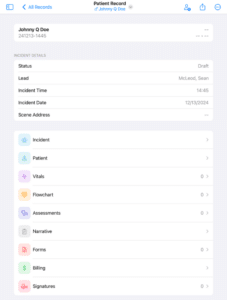
EHR | Stryker LP35 Beta
In Q4, we started beta testing the LIFEPAK 35, a brand-new ESO EHR cardiac monitor integration that receives transmissions through Stryker’s LIFENET API. The ability to import data from the monitor to ESO EHR reduces documentation time while improving the accuracy of your data, allowing you to better focus on the delivery of care. This new integration is now available to all ESO EHR users.
As technology modernizes in the field, ESO EHR will continue to advance its integrations to better support your needs, including the upcoming capability of importing 15-lead ECG waveform images.
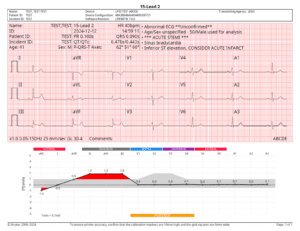
EHR | MIH / Community Paramedicine Run Type
Mobile Integrated Health (MIH)/Community Paramedicine has been added to ESO EHR to better support the unique workflow requirements of agencies that document MIH/CP visits. This run type and its required fields will streamline state submissions by removing many of the configurable validation requirements while giving you the tools necessary to manage your MIH/Community Paramedicine program’s unique documentation and reporting needs.
EHR | FLACC Pain Scale
The FLACC Pain Scale was part of our Critical Care initiative in 2024 and will be available in the Pain section within Vitals in ESO EHR. You can use it to directly document and upload FLACC Pain Scores and final score data for non-verbal patients into ESO Insights for easier reporting.
EHR | GenAI Narrative Web Beta Release
Currently in beta, the new GenAI Narrative Web feature for ESO EHR allows you to request an auto-generated Narrative on a PCR, streamlining data entry while improving focus on care. The first phase of our Auto-Generated Narrative uses the DCHARTE format, which allows you to request AI-generated narratives for Transport records with a “transport by this EMS unit” disposition.
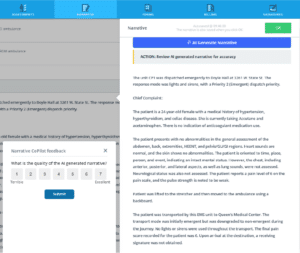
Our beta period will extend through the beginning of February. So far, customer feedback has been promising, and we will continue to collect and incorporate feedback throughout this period. This feature will be available to all customers on ESO EHR before Wave 2025.
Logis Dispatch | Voice Platform
A complete rewrite of the Logis Voice platform has been finalized and is now live with the first customer! The rewrite features a complete architectural makeover, client-side experience, and full ESO Chat functionality. Support for various phone systems will also be included in an upcoming phase.
Logis Dispatch | AVL Subscription API
The Logis Dispatch IDS API now includes the ability to subscribe to Automatic Vehicle Location (AVL) feeds. This enables you to perform live updates through webhooks in any system integrated into Logis Dispatch.
Logis Billing | Automation and Integrations
The ESO team was hard at work adding more automation and logic to the Billing solution, including:
- A new Payor Matrix feature that acts as a payor decision tree will further reduce the headache of incorrect payor denials. New integrations were added to enable bi-directional interactions with WayStar for insurance verification and discovery and Artiva for third-party patient invoice management. You can also now streamline frequent tasks by assigning hotkeys to your ten most-used functions.
- New configurations allow you to assign and report on workers’ claims for the Office of Worker’s Compensation (OWCP), assign provider numbers (Taxonomy) to service types to help reduce backend denials related to the services provided, and automate narrative generation and emergency statement form assignments based on payor rules and regulations through newly added narrative templates.
- Lastly, you’ll find updated logic that helps you identify and accept exceptions presented on manual 835 flat file imports, enhanced task views that assist with queue management and follow-up project preparation, updated contractual adjustments related to bundles and denials, and an automatic printing of ePCRs with paper CMS 1500 (HCFA) forms.
Fire Incidents | NERIS Update
Since late 2023, ESO has been actively working with FEMA and their contractor, UL (FSRI), to help you prepare for the transition to the National Emergency Response Information System (NERIS). In Q4 2024, FEMA delivered the final v.1 of the Phase 1 schema and a draft of the validation rules for incident reporting, which allowed us to validate some assumptions in our planning and adjust for future expansions of the rules. Our development team has been hard at work implementing our solution for NERIS with the goal of having a basic NERIS-compliant version of Fire Incidents ready for beta testing by the end of Q1 2025.
This basic version will not include auto-import configuration and integrations with CAD and EHR will not be added until upcoming releases in 2025. For more information, visit our FAQs About NERIS.
Hydrants | External API
Your Fire Data API subscription now includes a new external, bidirectional Hydrants API! This API provides direct, real-time access to hydrant data and allows for third-party integrations that make it easier to share your ESRI account with your water department and display shared hydrant and hydrant task data.
Hydrant records, including location, status, inspection and maintenance history, task scheduling, etc., can now be updated using the available API endpoints. To learn how to use the Hydrants API, head to the ESO API Developer portal.
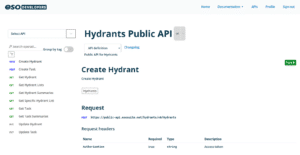
Permits | External API
A new external, bi-directional Permits API is now included in your Fire Data API Subscription. This API provides direct, real-time access to permit data, including type, status, fee, applicant, etc., which you can then update through available API endpoints. Head to the ESO API Developer portal to learn how to use your Permits API.
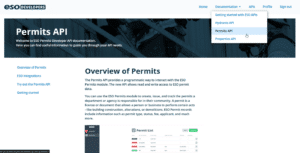
Public APIs allow us to incorporate the third-party services that improve your current ESO offerings and, in turn, improve your day-to-day workflows.
HDE | EMPI Matches
We have enhanced HDE EMPI matching to ensure that all units responding to an incident now qualify for an EMPI match rather than just a singular EMS record, which is what was previously eligible. This update guarantees that each of your responding units will be processed through our EMPI system, which is particularly crucial in regions with high first responder EHR utilization, such as Napa Valley and Monterey County in California and Providence Healthcare in Washington.
PM | Pay Rates
You can now track individual pay rate history on both PM Basic and purchased PM by heading to team members’ personnel records located in the Pay Rate section of the new Work Performance tab. You can also manage the complete list of hourly and flat rate pay rates by heading to PM > Settings. To enable this functionality, visit PM > Settings > Enable Add-Ons.
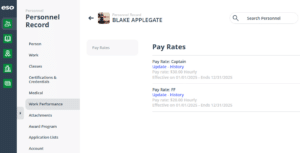
Pay Rates are available for any customer and are a prerequisite for the upcoming Compensation module. This new module will allow payroll calculations for volunteer and combination departments, as well as departments who have a pay-per-call model where personnel are paid by response.
PM | New Classes Insights Dashboards
Two new dashboards are available in Insights for PM! “Training Sessions and Duration by Personnel” is a global dashboard for customers who do not use credit hours and points for training classes and would prefer to calculate and record time based on session length.
The second dashboard, “PM – Classes – Quality Control,” will allow you to identify sessions with missing information (such as credits, instructors, or attendees) through a new quick selector bar graph and summary tables.
Activities | Edit Operational Tasks
This long-awaited Activities improvement will allow users with the appropriate security permissions to edit the fields of any completed operational task, including status. An audit trail located in the record will capture all changes made.
Checklists | New Meter Reading Fields
Based on your feedback, two additional meter reading fields have been added to Checklists: Aerial Hours and Generator Hours. These new options are now included in the editing process and, if enabled, will be available to your crew during checklist submissions.
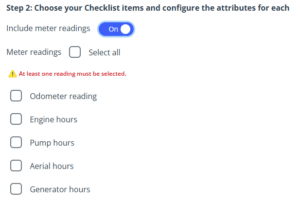
Assets | Maintenance & Asset Profile Updates
Several Asset updates were made in Q4, setting the stage for new Preventive Maintenance features coming in early 2025. Vehicle and equipment profile pages will now feature meter reading fields that can either be manually updated or automatically updated through Checklist submissions. We’ve also improved data storage to better support your Preventive Maintenance reminders and overall reporting experience.
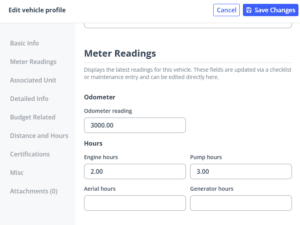
Meter reading fields have also been added to the Maintenance Request, along with view-only Created By and Created Date/Time fields, and the ability to set a vehicle back as in-service after the request is completed.
Scheduling | Comp Time Enhancements
Based on your feedback, administrators can now disable Schedule Conflicts for the Comp Time and Accrued Comp Time item types. This will allow schedulers to reflect the comp time used or accrued by employees while having a standard paid shift on the schedule.
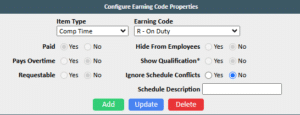
ODL – New PM and Assets Courses
Keep an eye out for two new On-Demand Learning (ODL) courses. “Personnel Management – Basic Setup and Use” is a refresh to the PM Basic course and is broken down into 14 short video modules designed to help you quickly find any information you need while making content more accessible. “Assets – Location Management” gets admin users up to speed on new Location Management features while also teaching them how to create, manage, archive, and organize locations and sublocations in Assets.
Insights | Dashboards
Our designers have been very busy this quarter building 48 new dashboards across the entire ESO Suite! Here’s a quick breakdown by product:
| Related Application | Number of New Dashboards |
| Patient Registry | 38 |
| Fire Incidents | 5 |
| Trauma Repository | 3 |
| EHR | 2 |
Cross-Product / ESO Suite | In-App Enhancements
In Q4, ESO received 1,646 enhancement suggestions from our community, and we have triaged and replied to 80.9% of those suggestions. We will continue to email you updates when viable ideas progress into the discovery, design, and development stages.
Our team worked on the next evolution of improving feedback throughout our software design and development process to ensure we are building exactly what your teams need. Our new Ideas Portal will be under tabs and mirror our Roadmap’s design and development stages:
- Now = Newly released features and updates
- Next = Works in progress with a delivery timeline
- Later = Ideas that are committed to the roadmap, but the timeline remains unknown
- Under Consideration = Ideas being actively investigated for feasibility
Look out for our pilot launch in Personnel Management early in Q1.
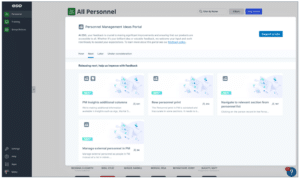
What to expect in Q1/25?
We have a few more exciting improvements in the works for Q1 2025. Please stay tuned for release notes and the next product blog, but here’s a sneak preview of upcoming updates and enhancements:
EMS
- EHR iOS GA
- Physio LP35 Integration GA
- Longitudinal Records for iOS and Windows Mobile
- EHR Web AI Generative Narrative – 1st Release
Fire
- GIS/Mapping (Properties Grid)
- Hydrants Bulk Actions
Shared Apps
- Scheduling – Shift Swap Refresh
- Assets – Preventive Maintenance Foundations
- PM – Compensation (Payroll for Vol/Combo) Phase 1
Hospital
- Compliance Matrix Tooling enhancements
- Cerner FHIR Integration
Cross-Product / ESO Suite
- A brand-new login screen and features
- Launching in early Q1, the Resource Center for Personnel Management will feature an ‘Ideas Portal’ pilot that will share ideas currently in various stages of design and development. To access it, click on the red notification in the Personnel Management Resource Center, which you can locate by clicking on the blue question mark in the bottom right-hand corner.
- If the ‘Ideas Portal’ pilot is a successful means of gaining more valuable feedback, we plan to launch a portal for each of our Resource Centers by the end of Q1. Please check it out and give us feedback on the value of the ideas presented.
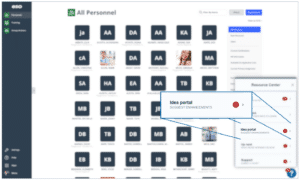
About Product Management at ESO
The ESO Product Management is responsible for creating the Product Roadmap, which outlines what products, features, and functionalities we will build next. Through daily collaboration with support, sales, customer success, industry experts, and, most importantly, customers like you, our team works hard to create the best apps possible to advance our mission of improving community health and safety through the power of data.
Over the past year, we’ve invested in world-class tools that allow us to capture customer product feedback at scale and, in turn, make more informed roadmap decisions. These tools enable us to quickly test ideas to deliver the most valuable features to you. We value your input and hope you continue to engage with us through our continuously expanding in-app capabilities
Want to look at the progress made on the ESO Product Roadmap in 2024? Check out the three previous ESO Updates Quarterly Product Enhancements blog posts below.
The post (Q4/2024) ESO Updates: Quarterly Product Enhancements appeared first on ESO.
]]>The post (Q3/2024) ESO Updates: Quarterly Product Enhancements appeared first on ESO.
]]>EHR | Longitudinal Record (Beta)
We are excited to announce that Longitudinal Record is now in beta for EHR web! This new feature breaks down the data silos that are inherent in typical prehospital documentation and changes the paradigm of patient care documentation from encounter-based to patient-centric.
You’ll now have a holistic view of frequent patients, along with the ability to view previous 12-leads, PCRs and HDE Outcomes. Intelligent probabilistic matching minimizes the guesswork to help you focus on care. As the foundation for our overall Mobile Integrated Health/Community Paramedicine solution, we look forward to getting this in your hands in the near future!
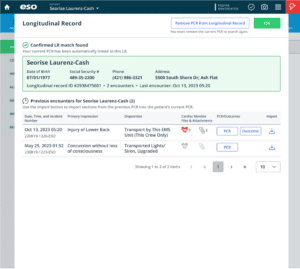
EHR | Critical Care
While rolling out Longitudinal Record in beta, we’ve also continued to expand our Critical Care offering. In Q3, the following additions were made for both web and Windows Mobile EHR offerings:
- Lab Values – Cardiac
- Neonatal Assessment
The initiative to bring more Critical Care features to EHR is continuing into Q4 where we plan to deliver: FLACC, Shock Index, and a Neonatal Form as well. Stay tuned.
LAB VALUES – CARDIAC

NEONATAL ASSESSMENT
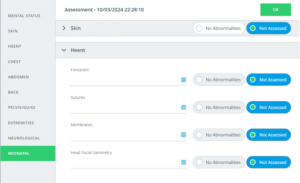
Properties | Address Verification (General Availability)
Address Verification has moved out of beta and is available for use in Properties. Now, when you enter an address, it validates it against the Esri API or you can enter manually to bypass verification as needed.
At different levels of the hierarchy (properties, buildings, occupancies), the system will notify you if related buildings or occupants are using the same address and the detailed address window will open whenever an error that needs to be resolved is shown. As part of the address verification workflow upgrades, you can also create a property, building, or occupant from the landing page.

Properties | External API (General Availability)
We’ve been working to develop an API ecosystem and are happy to report that Properties’ external API is out of beta and available. Through a developer portal that is accessible to both authorized vendors and ESO users, you can access and test various endpoints as well as view and download API documentation and multiple formats of API schema. There’s also a change log that automatically updates with API upgrades.
What’s next? Hydrants and Permits are coming for the API portal.
Incidents | Manual Re-Dispatching
A new Fire Incidents feature, manual re-dispatching allows you to repeatedly add a unit to an incident report (on one exposure) manually. Now, any agency unit (not aiding agency units) can be re-dispatched from the Units Report page with separate information (times, personnel, actions) completed for each re-dispatched unit report. Re-dispatched units are uniquely labeled with flags on the incidents print page to help with your agency’s reporting needs.
This feature allows for a more accurate picture of unit and personnel movements during larger, more complex, potentially multi-day fires and other incidents. You can also find it in Insights and the Fire Data API.
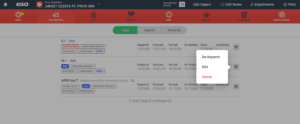
Insights | Point to Point Sharing of Dashboards
Point-to-Point Sharing is now available in Insights, allowing you to share dashboard templates outside of your organization in order to foster collaboration and enhance dashboard libraries. Once an Admin grants you the “Insights Dashboard Community User” security role, you can use this new feature the same way you would use the Insights dashboard sharing workflow— simply search for the name of an individual from another agency and share. For more details, including how to enable this great feature, look for a pop-up guide in Insights.
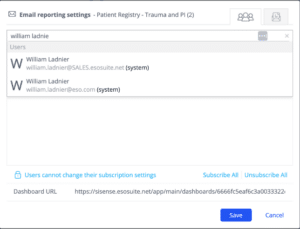
Insights | New Global Dashboards
Our latest set of global dashboards offers more ways to visualize and leverage data across all product verticals and are designed to provide faster, more actionable insights to meet your evolving needs.
Thanks to your feedback, we’ve also enhanced our process for introducing new dashboards, making it more efficient and responsive. You can now expect more timely updates and quicker implementation of new ideas submitted through the Resource Center feedback form.
EHR
Fire RMS
Patient Registry
Data Exporter Tool | Filter Query Enhancements
In the Data Exporter Tool, all data sources now have improved filtering options, allowing you to query more specific data populations and retrieve cleaner, more actionable data sets.
Here’s a look at the new filter enhancements across our data sources:
- EMS
- QM Review Type
- Review Date
- Patient Contact Disposition
- Transport Disposition
- Fire Incidents
- Incident Type
- Fire Permits
- Issued Date
- Authorized Date
- Permit Type
- Permit Status
- Fire P&I
- Inspection Type
- Patient Registry
- Record Tag
- Timeline Type
- Event Occurred
- State Repository
- Patient Age in Years
- eDisposition.02 – Destination or Transferred to Code
- eResponse.05 – Type of Service Requested
- Agency Number
Assets & Checklists | Location Management
To make onboarding and maintaining the Assets & Checklists apps more efficient, you can now copy the layout of a vehicle’s sublocations to similar vehicles, along with a vehicle checklist, so you’ll no longer need to do so from scratch for each new addition. You will also be able to deactivate sublocations (or compartments) for vehicles that are no longer needed.
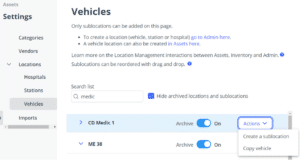
Scheduling | Best Fit Custom Sorting
Our new Scheduling feature addresses more complex open shift rules, also known as call-backs or overtime hiring. Located under Configuring Scheduling, you can now sort call-back lists in the Best Fit window by: Last Offer Date, Seniority, Weekly Hours, Annual OT Hours, Pay Rate, and FT/PT Status. Once configured, the Best Fit Window will notify employees in the desired order regarding any open shifts.
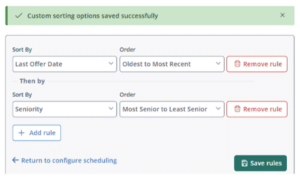
Scheduling | Outgoing Notifications Log
Outgoing Notifications Log is a major improvement to reports in Scheduling. Your admin team will no longer need to question whether email or text messages regarding open shifts, shift changes, etc. were successfully sent to users, thanks to this new status report with multiple filtering options.

Patient Registry | Enhancing Compliance and User Experience
As we wrap up another productive quarter, we’re excited to share the latest Patient Registry updates and achievements. Our team has been hard at work, focusing on regulatory compliance deliverables across Ohio, Minnesota, Georgia, Michigan, Connecticut, New Jersey, Texas, California, Florida, and Hawaii. Listening to our customers and addressing their concerns was crucial, as we tackled several high-priority bug fixes and made strides in discovering and planning minor enhancements to improve the overall procedures data entry, coding search, and reporting experiences.
We are committed to continuously improving Patient Registry to meet your needs while staying ahead of regulatory changes. Thanks for your continued support and feedback.
Cross-Product / ESO Suite | In-App enhancement feedback replies
In Q3, our ESO Product team have been triaging your feedback and working hard to reply within two weeks of submission. In Q3, we received 1,626 enhancement suggestions from users and have triaged and replied to 90%. We are continuing to improve our triage muscle in Q4 and will be updating users when viable ideas make their way into the discovery, design and development stages.
What to expect in Q4/24?
We have a few more exciting enhancements in the works that we plan to deliver in Q4 2024. Please stay tuned for release notes and the next product blog, but here’s a sneak preview of a few updates and enhancements we have planned:
New Trauma Repository Launch
Set to debut in Q4 2024, this new product is designed to enhance customer satisfaction and operational efficiency with tighter alignment between your Insights, Data Exporter, and Snowflake Reader data dictionary and reporting capabilities. Like EMS Repository, Trauma Repository is vendor agnostic in how it receives data submissions and ensures data quality through validation rules. Stay tuned for more updates as we approach the launch date.
Also in Q4
EMS
- EHR iOS native app for Early Adopters
- LIFEPAK 35 integration
- Longitudinal Record General Availability
- MIH EHR Clinical Documentation
- EHR to Logis record Integration
Fire
- NERIS beta
- Hydrants and Permits External APIs
- Contact Manager
Shared Apps
- PM Basic for Canada
- Assets, Checklists and Inventory for Canada
- Pay Rates in PM
Hospital
- The Health Data Exchange is improving the way EMPI (Enterprise Master Patient Index) matches EMS records to a hospital visit, allowing all EMS units that arrive on scene to do so. This change is jointly beneficial, allowing hospitals to receive non-transport records and first responders to receive outcomes.
- We are enhancing our self-serve onboarding experience to include Patient Registry configuration. This feature will be available to our new customers when setting up their ESO Suite, offering the flexibility to move at their own pace while benefiting from comprehensive guidance and progress tracking.
Cross-Product / ESO Suite
- As we mentioned last quarter, we are planning to showcase all live ideas in consideration for each app, and give you access to your submissions as well as their triaged status.
- Our first step in Q4 will be the launch of our ‘enhancement ideas’ pilot, which will appear in the Resource Center for Personnel Management. This pilot will contain a range of ideas in consideration.
- Please engage with this feature when it launches. All users will see the red notification on the Resource Center (blue question mark in the bottom right-hand corner) of the PM app. Click on the ideas portal and add anything to any of the ideas that helps our PM team better understand your needs. You’ll also see what stage the presented ideas are in design and development.
- After you have accessed the ‘enhancement ideas’ pilot, we will ask for your thoughts on whether viewing current ideas and delivering feedback at an earlier stage is helpful. We would really appreciate a response, as it will help shape the future evolution of enhancement ideas.
About Product Management at ESO
Product Management is the team at ESO that creates the Product Roadmap, informing the products, features, and functionality we build next. We collaborate daily with support, sales, customer success, industry experts and executives, and most importantly with our customers and users to find out how we can best advance ESO’s mission of improving community health and safety through the power of data. Over the past year we have been investing in world class tools to help us capture our user’s product feedback at scale and organize what we are learning to make more informed roadmap decisions.
These tools are enabling us to test ideas quicker so that we can prioritize what we build next with enhanced confidence it will deliver value for our user base. We value your input and hope you will engage with us through the in-app capabilities we’re continuing to expand and refine.
The post (Q3/2024) ESO Updates: Quarterly Product Enhancements appeared first on ESO.
]]>The post Reinventing Emergency Response: ESO’s Acquisition of Logis appeared first on ESO.
]]>
“The ability for us to link data from the 9-1-1 call through the hospital visit and post-acute care for the very first time is exciting and will help us improve community health and safety.”
– Erica Holland, ESO’s Vice President of Corporate Development
A partnership ten years in the making, the Logis and ESO teams are officially joining forces. ESO’s acquisition of Logis Solutions marks the beginning of a new era in emergency response. By using our combined technology to unite the entire healthcare infrastructure – from 911 calls to outpatient care – through the power of data, we will optimize the clinical, financial, and experiential aspects of healthcare and safety workflows like never before.
In doing so, Logis and ESO will use our collective data sets to improve patient outcomes, decrease costs, and create a more cohesive experience for customers.
“Optimizing for outcomes is at the core of what we both do, so the combination of our teams, technology, and data is a natural fit in supporting our shared mission with customers.”
– René Munk Joergensen, Founder and Partner at Logis
To give full insight into the acquisition and what it means, leadership from both teams sat down to discuss the significance of this merger, the goals we aim to achieve, and what this means for customers.
Hear all about the new and exciting changes ahead directly from Eric Beck, President and CEO at ESO; Gil Glass, CEO at Logis; Erica Holland, Vice President of Corporate Development at ESO; and René Joergensen, Founder and Partner at Logis by checking out the full video or reading the transcript below.
If you’re interested in learning more about the vision behind the merger and the exciting changes to come, check out the press release.
Video Transcript
ESO & Logis Solutions presents:
From Call to Care: ESO’s Acquisition of Logis Solution
Eric Beck, President and CEO, ESO
Hi everyone. I’m Eric Beck, I’m the CEO of ESO, and we’re excited today, having just announced the acquisition of Logis. This partnership has been years in the making, and we wanted to sit down as a group of leaders to talk a little bit more about how Logis and ESO are coming together and some of the exciting things we have in store going forward.
Gil Glass, CEO, U.S., Logis Solutions
I really believe the thing that gets me so excited, and I think that should have our teams excited, is we’re bringing together the two premier organizations in this space.
Both of our teams care so much about patients and the outcomes related to them. And bringing these two great organizations or the two great teams, truthfully, really makes us powerful.
Erica Holland, VP of Corporate Development, ESO
On the technology side of the equation, the ability for us to link data from the 9-1-1 call through the hospital visit and post-acute care for the very first time is exciting and will help us improve community health and safety.
René Joergensen, Co-Founder and Partner, Logis Solutions
I think there’s absolutely potential here for combining our forces, so we cover the whole healthcare infrastructure for both outpatient care, but also to some extent, all the way in through the doors at the hospital. When we pluck all of this together, you have a continued set of data that follows the patient all the way through. We can reduce both the bad outcomes, we can also reduce the cost of healthcare, which also has a benefit.
Eric Beck
I couldn’t agree more. Optimizing all of those stakeholders across the ecosystem around outcomes, whether they’re clinical, financial, or experiential, and doing that in a way that’s effortless for first responders and healthcare professionals–I think that’s the real opportunity.
I think the 20-year journey each of our organizations has been on has produced rich data assets teams that are ready to take on the next challenge, and combining that data and creating new workflows seems like it couldn’t be a better time. We’re kind of both at that inflection point to take what we’ve been building and catapult it.
What’s next for ESO and Logis Solutions?
Gil Glass
You know, this is really more than just bringing two great organizations together. This is really about years of relationships with members between both teams. I’ve come to know and respect a lot of people at ESO over the last 20 years, and especially the last ten as we’ve been doing integration work together and other types of activities, and [we] worked with people here in past lives. It’s really about this shared culture, and it’s also the shared desire for the same outcomes.
Eric Beck
I think the trust, as you said, runs across both teams, Logis and ESO, but even individuals. You know, personally, I’ve had the chance to be a Logis customer twice in a prior life–once on the EMS transport and the mobile integrated health side, and a second time in a hospital and health system context during a pandemic. Those deep experiences help inform how we think about the value that we can unlock together for our customers, our communities, and our teams.
I think we’re getting there by coming together. I think the real work is still ahead of us to deliver on this promise. But you know, Gil, when you and I first met ten years ago, we were talking about what could be possible with a platform like Logis and the data that ESO is able to bring to bear to inform how that platform orchestrates the workflows and helps to guide care. It’s almost unreal to think about how far we’ve come and what we could do together with our shared customers and with new customers in the US and around the globe.
René Joergensen
And I think we’re just scratching the surface of what we can do with this. I mean, we have ideas that make us excited about all of this. With how we can use the outcome, the actual result of our predictions, and our actions to improve on those actions before it happens, right? When we look at the combined brain power of what we’re going to put on the table here, I think it’s pretty outstanding, to be honest.
The post Reinventing Emergency Response: ESO’s Acquisition of Logis appeared first on ESO.
]]>The post (Q2/2024) ESO Updates: Quarterly Product Enhancements appeared first on ESO.
]]>EHR | Critical Care
We’ve expanded our Critical Care offering with the following web and Windows mobile additions:
- Flight Form
- Lab Values – CMP (Comprehensive Metabolic Panel)
- Ventilator Monitoring Adjustment
However, that’s not all for Critical Care documentation! Be on the lookout for additional enhancements coming soon.
FLIGHT FORM
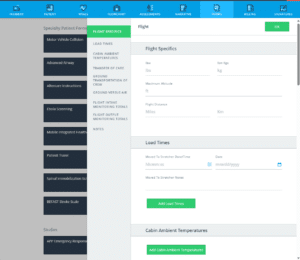
LAB VALUES
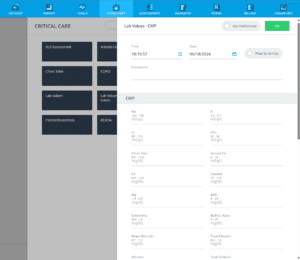
VENTILATOR MONITORING
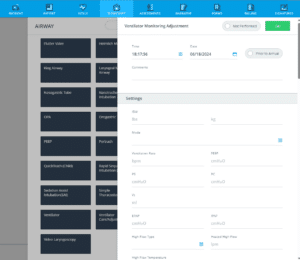
EHR | Manual Ventilation: BVM (Bag-Valve-Mask)
We’re excited to announce the release of a flowchart that allows you to better document manual ventilation (BVM). This flowchart is not exclusive to critical care and is available for EHR Web, Windows Mobile, and printed reports.
MIH | What does your MIH program look like?
Last month we conducted a Mobile Integrated Health/Community Paramedicine survey and had some interesting results. It is clear from the chart below that many organizations are working with behavioral health, substance abuse disorders, and readmission prevention. Along with those common services, programs across the country are expanding into other non-traditional out-of-hospital roles. 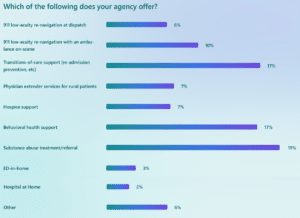
As Mobile Integrated Health/Community Paramedic programs continue to evolve and mature, the focus on providers that are traditionally in clinics and other healthcare facilities will become more prevalent.
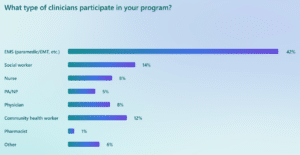
With this consideration, ESO will continue to partner with EMS agencies as you transform your roles beyond traditional EMS responses. Part of this will include expanding the Electronic Health Record (EHR) beyond the NEMSIS standard to allow for more flexibility in clinical documentation. Also, ESO is developing a Longitudinal Record which will upgrade the episodic nature of an EHR record by linking all related EHR records under a single patient. Get a sneak peek below.
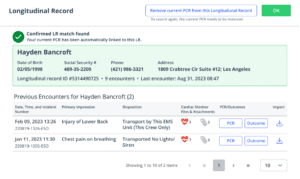
Fire Incidents | NERIS
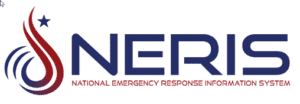
NFIRS, the current fire incident reporting system is being replaced by NERIS (National Emergency Response Information System) by the end of 2025. On May 6, 2024, version 1 of NERIS core data schema was released, including:
- Fire Department (Entity) Specification
- CAD/Dispatch schema
- Incident schema
Since the upgrade was announced, ESO’s Fire Incidents team has been preparing and planning to ensure your team will be ready for the transition to NERIS. Now that version 1 of the schema is out, development has begun. To learn more about ESO’s plans, check out the most recent NERIS blogpost.
Properties | Data Sharing (Construction Tab)
We’ve recently added a “Same as building” toggle to each section of the Construction tab in the Occupant level of the hierarchy. This toggle allows you to quickly and efficiently populate the Construction tab of the Occupant with the same information from the Building when necessary.
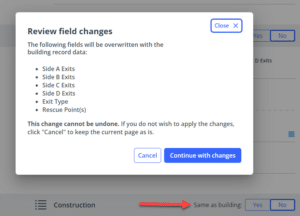
Inspections | Add Suite/Unit/Location to Grid View
We’ve also added a Suite/Unit/Location field to the Occupant Name & Address column under the Inspections grid view, which allows you to easily differentiate between inspections for occupants with the same street address as well as locate the inspection that needs completion.
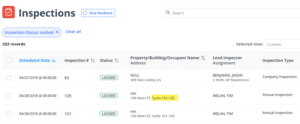
Scheduling | Rotation Color Coding on Month View
Based on popular demand, scheduling managers can now color code shifts for quick identification of shift rotations when looking at the schedule’s monthly view.
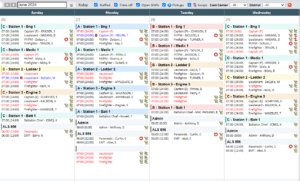
Scheduling | New Decline Option for Open Shifts
Previously, when sending out an open shift notification to a list of employees in a specific order, each employee’s time limit had to expire before the offer would cycle to the next in line. A new “decline” option allows an employee to indicate they’re opting out of accepting the open shift and moves the offer to the next employee expediting the process. The responses are also now logged in the Last Offer Report.
Patient Registry | FHIR Integration
Now officially in the Epic Showroom, the Patient Registry FHIR integration improves your data abstraction efficiency by importing data from the hospital EMR system directly into a patient encounter record in the registry. This is a scalable solution and a recommended standard outlined in the CMS Interoperability and Prior Authorization final rule.
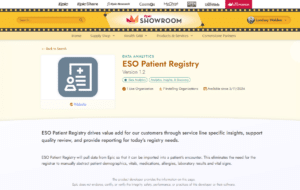
Patient Registry | PRQ Dashboards
The first batch of PRQ Dashboards are available. These valuable dashboards support your hospital in its daunting task of preparing for site survey verification and review process, making the process easier.
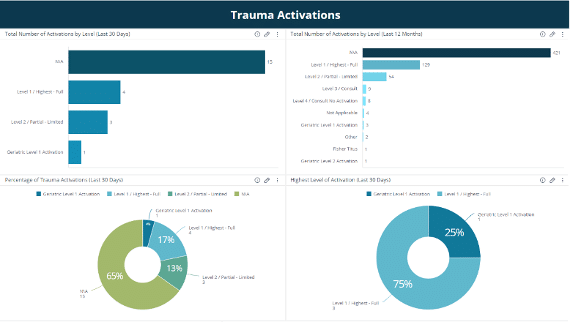
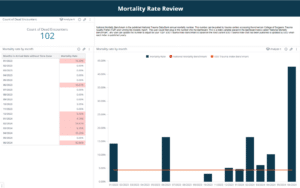
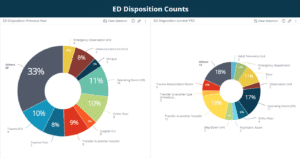
PM | Insights – General Availability
We’re excited to announce that PM data is now available in Insights for all customers! We received a lot of great feedback while in beta and our teams have worked hard to bring this option to general availability. The biggest change is the real-time availability of PM data in Insights, instead of the nightly load of PM data for Ad Hoc, making your PM data reporting easier and more accurate.
Onboarding Guide | Personnel Management
We have enhanced our self-serve onboarding experience to include Personnel management (PM) configuration. This feature is available for our new customers when setting up their ESO Suite, offering the flexibility to move at their own pace while benefiting from comprehensive guidance and progress tracking. Building on the pre-existing capabilities, which include the setup of key demographic details and data list imports, the product now facilitates the importing of personnel records and other critical PM configurations to optimize ESO Suite.
Cross-Product / ESO Suite | In-App Enhancement Feedback Replies
Last quarter we announced that ESO Suite admins can now submit product feedback and ideas directly to our product teams without needing to contact ESO Support. You can access this feature in the Resource Center of any of our apps by clicking on ‘Feedback – Suggest Enhancements.’
And new this quarter, our ESO Product team will now reply to submissions. By the time you receive an email regarding your feedback’s status, the Product team will have discussed your ideas and made informed decisions on what will have the biggest impact for our customers and our mission. While we cannot commit to every idea that is submitted, when ideas do align with our goals, we’ll keep you updated on the investigation and implementation of your suggestions, as well as the discovery, design and development stages.
Now that our feedback reply process has begun, we are committing to replying to feedback within two weeks of submission. As we mature this feature, we plan to give users access to all their submissions as well as their triaged status. We really value the time and effort it takes for you to share your ideas and encourage you to continue to submit feedback.
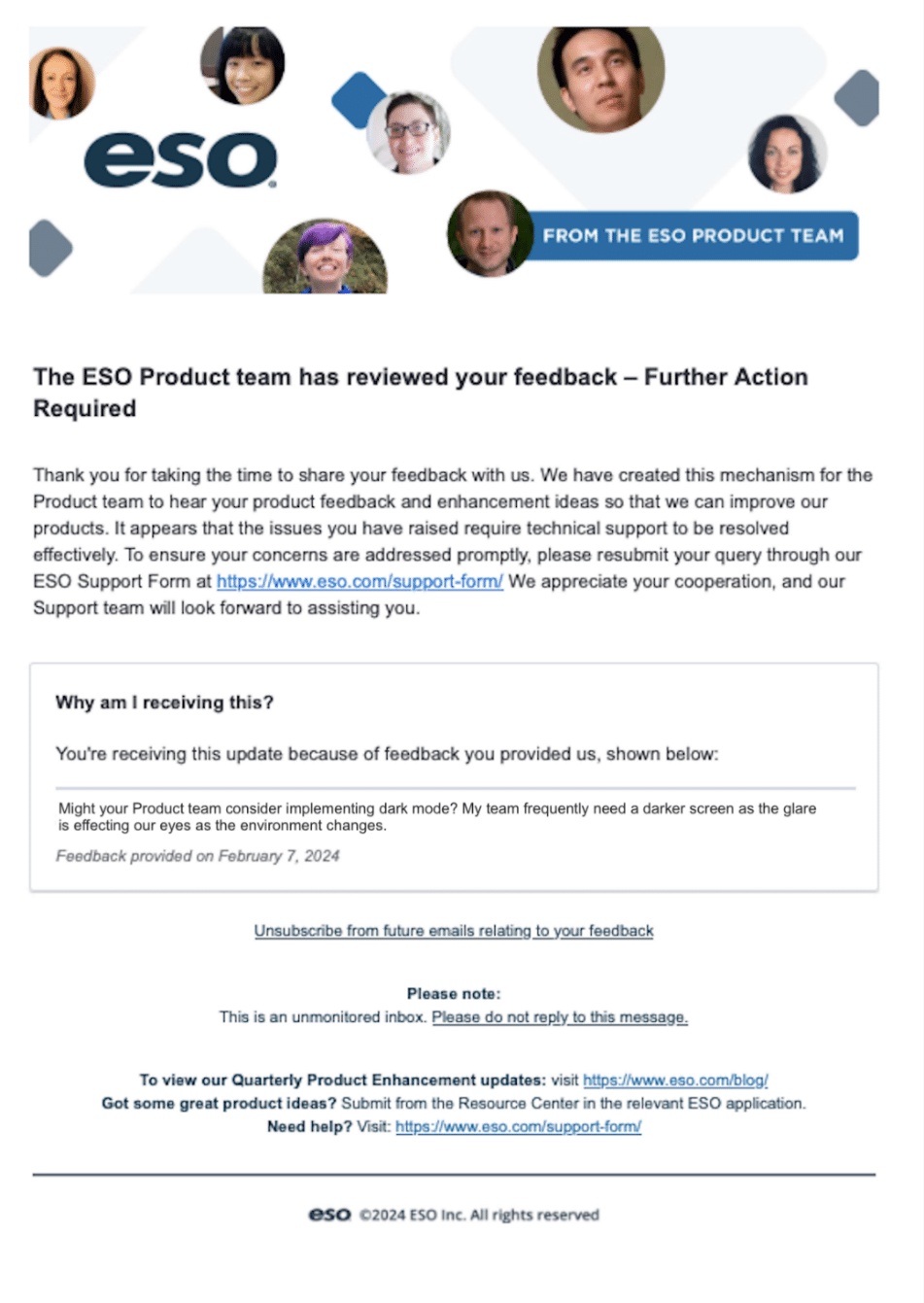
What to expect in Q3/24?
We have even more exciting enhancements in the works for Q3 2024. Here’s a sneak preview of the updates to come, but you’ll want to stay tuned for upcoming release notes and product blogs:
Assets & Checklists | Location Management
Admin can soon deactivate sublocations (or compartments) for a vehicle that is no longer needed, as well as copy the layout of a vehicle’s sublocations to similar vehicles to help expedite setup. This new feature will also copy checklists, so you will no longer need to start from scratch for each vehicle in the fleet.
Insights | Point to Point Sharing of Dashboards
Point-to-Point Sharing will soon be available in Insights. You’ll be able to share dashboard templates outside of your organization. This feature is intended to foster collaboration and enhance your dashboard library. Look for a pop-up guide with more details including directions on enabling this great feature in early July.
Also planned for Q3:
EMS
- Beta release of our new Longitudinal Record feature
- Releases for Neonatal Assessment and Cardiac Lab Values to better facilitate documentation of Critical Care
- A new workflow that better supports Wheelchair Transports documentation
Fire
- Continued preparations for NERIS (National Emergency Response Information System)
- Improvements to our Properties landing page including GIS/Mapping elements
- Print updates for Inspections
- Release of our new Properties API
Shared Apps
- Several Inventory controlled substance reports delivered in Insights
- A notifications log in Scheduling with audit of employee open shift notifications
- Multi-column sorting in the Best Fit window when sending out open shift notifications
Hospital
- Continued compliance updates for Patient Registry
Cross-Product / ESO Suite
- Replies to customer feedback submitted through the Resource Center within 2 weeks of submission
- First release ESO Suite for Canada (Canada Data Center, Login, Admin)
- Enhancements to Data Exporter Tool – additional filters
Want to see the updates from April 2024? Visit the previous blog here.
About Product Management at ESO
The Product Management team creates the Product Roadmap, which includes deciding on which products, features, and functionality we build out next. We collaborate daily with support, sales, customer success, our industry experts and executives, and most importantly with our customers and users to find out how we can best advance ESO’s mission of improving community health and safety through the power of data.
Over the past year we have been investing in world class tools to help us capture our user’s product feedback at scale and organize what we are learning to make more informed roadmap decisions. These tools are enabling us to test our ideas quicker so that we can prioritize what we build next with enhanced confidence it will deliver value for our user base. Stay tuned for more exciting updates in the coming weeks as we continue our journey to enhance your experience with ESO products!
The post (Q2/2024) ESO Updates: Quarterly Product Enhancements appeared first on ESO.
]]>The post (Q1/2024) ESO Updates: Quarterly Product Enhancements appeared first on ESO.
]]>Cross-Product / ESO Suite | In-App enhancement feedback
Relevant to all ESO customers
As an ESO Suite admin, you are now able to submit your organization’s product feedback and feature enhancement ideas directly to our product teams, without needing to contact ESO Support. You can access this feature in the Resource Center of any of our apps by clicking on ‘Feedback – Suggest Enhancements.’ After submitting feedback, the product team will receive it directly along with the admin’s contact information and organization details. This helps us make informed decisions on what enhancements make a difference for our customer base. The ESO Product team will then contact the submitter if they have any follow-up questions, and keep them informed via email as they review and triage the submitter’s feedback.
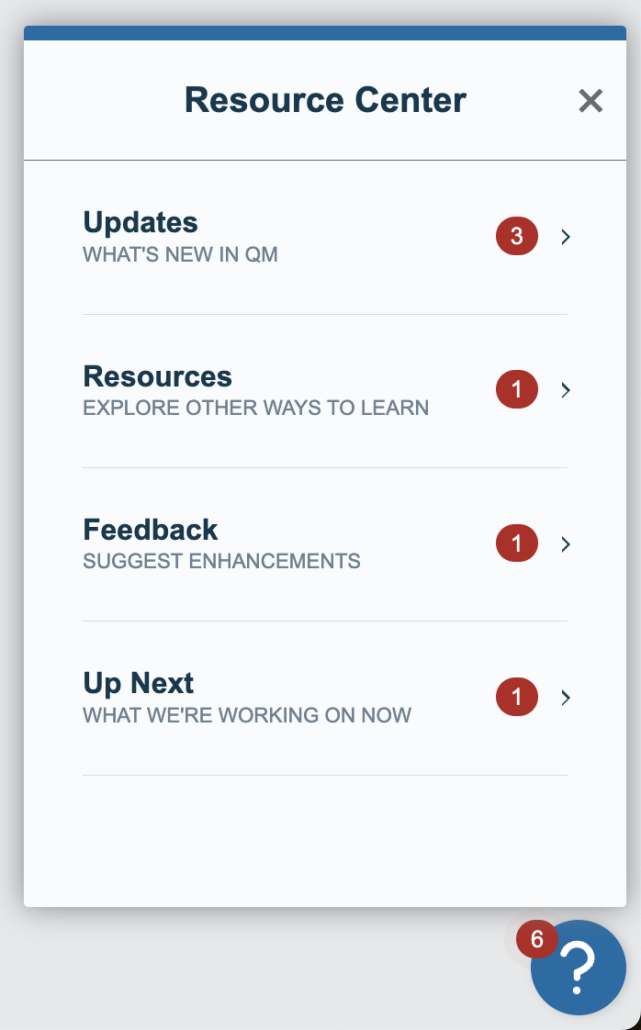
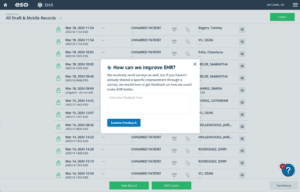
Cross-Product / ESO Suite | In-App product roadmap
Relevant to all ESO customers
Launched on March 27th , our in-app product roadmap gives you visibility into what we’ve committed to in the near future. With Admin access, each application will allow you to see what we are working on now, as well as what’s next, and what’s planned for later inside the Resource Center. We will continue to publish quarterly updates in this blog series for more color and context, but you will now also have a quick reference available in the app.

Insights | Seconds Enhancement
Relevant to all ESO customers
Insights now supports concatenated datetime stamps including seconds. All datetime difference (DIFF) functions now work appropriately including second difference (SDIFF). Date and time only columns are still available and enhanced with second-level precision.
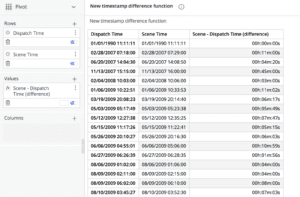
Data Exporter Tool | Basic & Advanced
Relevant to all ESO customers
We’re thrilled to announce the launch of our free Data Exporter Tool, available in both Basic and Advanced versions to cater to your varying data export needs, starting April 1st. The Basic version, included with any core product purchase, offers an intuitive point-and-click interface for large ESO data exports, supporting up to 200 columns, 10 table joins, and 1 million rows per export, with limitations based on the organization’s size. The Advanced version, designed for larger and more complex requirements, allows for exports of up to 1500 columns, 25 table joins, and 3 million rows, with the added benefit of unlimited monthly data exports. Both versions enable you to build, schedule, download, and email data exports directly as CSV attachments, simplifying data management and enhancing productivity.
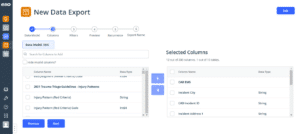
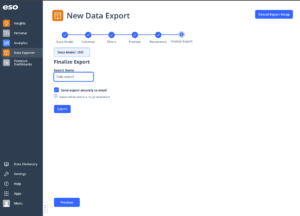
Federated Single-Sign-On (SSO)
Relevant to Fire, Hospital, and State customers
You can now activate Federated single sign-on (SSO) for login to the ESO suite. It is also now supported with both Azure Active Directory and SAML 2.0 as authentication methods.
With SSO, you only need to remember a single password for all applications and are more likely to avoid the risk of theft. In addition, IT administrators can create new users centrally and disable user accounts when they leave.
If your organization has any of the following modules, you are currently excluded from the SSO feature and will not see the above menu option: EHR, EHR mobile, and Inventory. This is due to some of the specific features in these products including: offline access for EHR windows mobile, positive identification in EHR, and witnessing in Inventory– all of which require secondary authentication of another user. We are currently working on solutions to address these challenges.
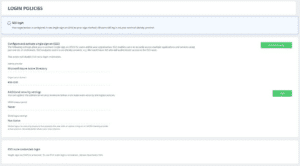
EHR | iOS
Relevant to EMS customers
We have taken the leap into the world of iOS by working on an Apple native mobile application for EHR. The team is working closely with Apple’s Design and user experience experts to ensure we utilize Apple’s native UI/UX format, so you can take advantage of all the features that iOS has to offer. This is a huge step forward as we try to serve the next generation of EMS providers while keeping up with the rapidly changing technology landscape. This solution will take advantage of the tight integration between the Apple hardware (iPad, iPhone, etc.) and software and gives us the ability to do innovative things with the device camera and other sensors as we design the EHR iOS mobile application.
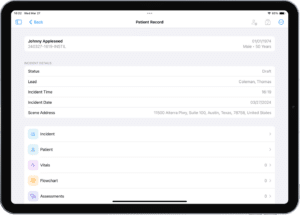
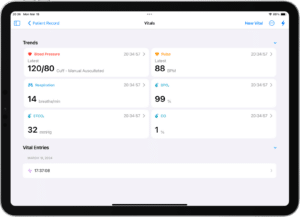
EHR | Critical Care
Relevant to EMS customers
The EHR team has been working very hard on several features to allow you to document for Critical Care in a more robust manner. In Q1 the following flowcharts were added to EHR:
- Impella Device Care
- Lab Values – Blood Gases
- Lab Values – CBC
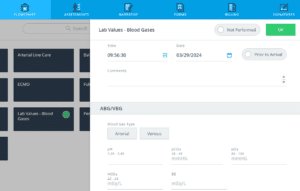
In addition, the Cuff Pressure field was added to many of the Intubation flowcharts such as: King Airway, Orotracheal Intubation, Rapid Sequence Intubation (RSI), Retrograde Intubation, and Sedation Assist Intubation (SAI). A precise Cuff Pressure minimizes complications associated with intubations and now EHR allows you to document it.
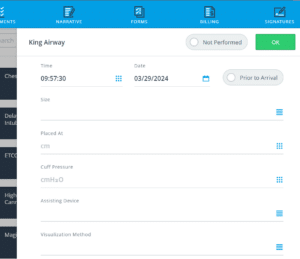
The initiative to bring more Critical Care features to EHR is spanning many quarters and we will continue to provide more in Q2: Ventilator Monitoring (and Adjustment), Lab Values – CMP, Flight Form, and Lab Values – Cardiac.
QM | Insights
Relevant to EMS customers
QM has now been added as a data source to Insights to round out the EMS data platform. This update provides three new global dashboards: QM – Billing Review by Feedback Type, QM – Clinical Report, and QM – Documentation Report to help you keep track of QM related data, as well as nine new tables to help you create new dashboards. These dashboards have all the data available in the QM Reports in Analytics.
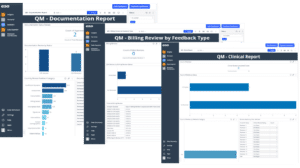
Inspections | Grid Updates
Relevant to Fire customers
You’ll be sure to notice several updates were made to the Inspections landing page (grid) to make it easier to use, including additional filters to help you easily identify and filter reinspections.
A “schedule inspection” button was added to the grid, allowing you to schedule any inspections directly from the application. Previously, the only way to do so was from the Properties application.
With the new bulk select functionality, you can now select inspections for bulk updates, including: date and time, assignment, and lead or other inspector fields. This feature also allows to export the inspection list as a CSV.
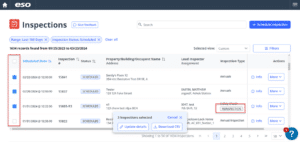
Fire Incidents | Handling Canceled Units
Relevant to Fire customers
When a unit is marked as “Canceled Prior to Arrival”, the following validations are no longer enforced:
- Dispatch Priority Always Required
- Exposure and Decontamination Conditionally Required
- Reason for Delay Always Required
- Unit Actions Taken Always Required
- Unit Narrative Always Required
In addition, when the Incident Type is a 611 (Dispatched and Canceled En Route), all units will be marked as canceled. This will reduce your workload for canceled units and will speed up completion time for Incident reports.
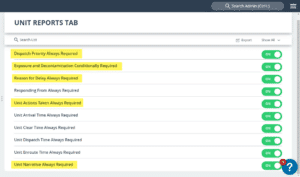
Hydrants and Permits | Insights
Relevant to Fire customers
For Hydrants and Permits, you can now report on your records and tasks in Insights. With the correct permissions, you can also view global dashboards and multiple reports for Hydrants, Hydrant Tasks, Permits, and Permit Fees. With this addition, all of the Fire RMS suite is now available to you for reporting in ESO Insights.
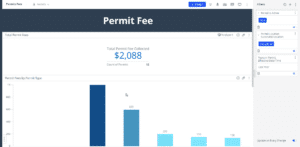
Properties | Address Verification (Beta)
Relevant to Fire customers
When you enter an address, it will now validate against the Esri API. You can also choose to enter addresses manually and bypass verification. At different levels of the hierarchy, the system will notify you if related buildings or occupants are using the same address, and the detailed address window will open whenever the Esri API throws an error that needs to be resolved.
As part of the address verification workflow upgrades, you will also be able to create a property, building, or occupant directly from Properties page.
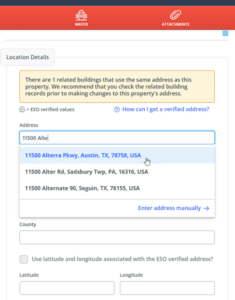
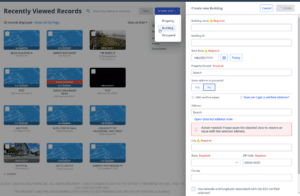
Properties | Public API (Beta)
Relevant to Fire customers
We are constructing an API ecosystem, starting with Properties. Using our APIs, you will now be able to get your data out of ESO. The Properties API will be bi-directional. Once it is released, our team will move on to APIs for Inspections and Hydrants.
Through a developer portal, you will have the ability to access and test endpoints as they become available, as well as view and download the API documentation with ease. You can download the API schema in multiple formats from the developer portal. A change log will also be available that’ll be updated automatically as upgrades are made to the API. Authorized vendors who will not have user login access to ESO will have access to the developer portal.
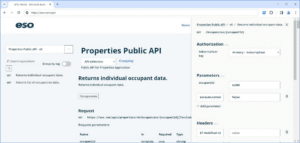
ODL | CAPCE Credit
Relevant to EMS customers
On-Demand Learning (ODL) is evolving from a simple training vessel to a full product. Our ODL product is now capable of awarding CAPCE-accredited CE credits for outcomes review! This marks a significant change for our ODL product. Initially, it was conceived to give you a more scalable and cost-effective product training experience, but over time we’ve been able to expand the experience with more recurring value. You can now also upload your own training content and use ESO ODL to enroll staff and track completion. CE credits will also be awarded for thought leadership content we’re bringing forward, such as the latest in EMS research.
PM | Insights (Beta)
Relevant to EMS and Fire customers
Most PM data is now available in Insights for beta customers! Long awaited, PM Insights will have many advantages over reporting in Ad Hoc. The biggest change is that PM data will be available in Insights in near real time, as opposed to the nightly load of PM data for AdHoc. It will make your reporting on all PM data, especially on classes and certifications, much easier and more accurate. All historical PM data, including records that you’ve previously imported or brought in through the Lexipol integration, will be available in Insights.
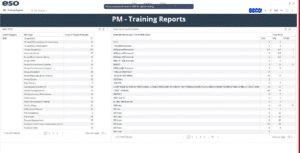
Activities | Data in Insights (Beta)
Relevant to EMS and Fire customers
We are excited to announce Activities Insights, which will give you four global dashboards to help analyze Activities data from both a high-level and detailed view, as well as ensure that your historical activities data is still accessible.
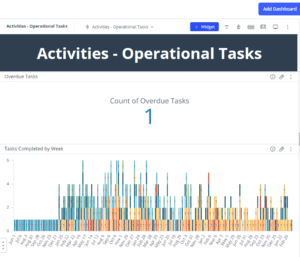
Checklists | Equipment ID
Relevant to EMS and Fire customers
In the Checklists app in the ESO Suite, you’ll now have an Equipment ID checklist item type, allowing you to indicate what equipment is on what vehicle in the Assets app while filling out a checklist. When a piece of equipment is identified, and the checklist submitted, the location of the equipment is automatically updated in Assets if it has changed.
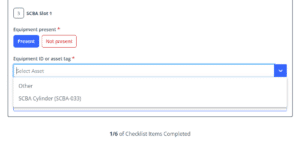
Patient Registry | Direct Coding
Relevant to Hospital customers
Taking feedback from Patient Registry beta, we have rolled out a “Direct Coding” functionality across Diagnosis, Procedure, External Cause, and Supplementary factors.
You are now able to add multiple codes simultaneously without having to go through the Code Builder tool, enhancing flexibility to suit your individual workflows, improve abstraction speeds, and maintain data quality.
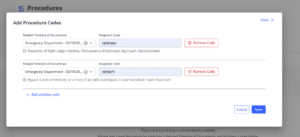
Patient Registry | Automated Calculations
Relevant to Hospital customers
ESO has added automated calculations to Total Ventilator Days and Blood Flowcharts, which will increase your speed of abstraction and improve data quality.
Total Ventilator Days will now look at multiple data points across the continuum of care of a patient and automatically calculate how many days the patient required a ventilator. Blood Flowchart Summary will sum and display the blood given to a patient using flowchart data and calculate the blood given within the first 4 hours, first 24 hours, first 48 hours and in total.
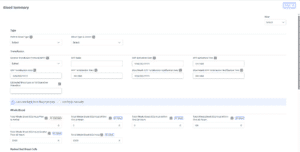
What to expect in Q2/24?
We have a few more exciting enhancements in the works that we plan to deliver in 2024. We recommend staying tuned through release notes and upcoming product blogs, but here’s a sneak preview of a few of the updates and enhancements we have planned:
EMS
- Wave 2024 will be one for the history books. Several innovative enhancements to EHR will be announced at Wave. We don’t want to spoil all the surprises, so we’ll update this blog right after Wave to make sure you’re kept up to date.
- Critical Care: Ventilator, Lab Values – CMP, Flight Form, Lab Values – Cardiac
- Additional NEMSIS 3.5 State Upgrades
Fire
- GIS/Mapping – Address Verification
- Fire Incidents IRWIN Wildland Reporting
- Continued preparations for NERIS (National Emergency Response Information System)
Shared Apps
- Rotation/Shift color coding on month Schedule Views
- PM and Activities in Insights, general availability
- Sub-location management for Assets & Checklists
Hospital
- Patient Registry EMS Integration with HDE
- Patient Registry Epic FHIR Integration
Cross-Product / ESO Suite
- Onboarding self-serve guide for customers upgrading to ESO Suite from acquired applications
- Data source time refresh
To see these enhancements in action, learn more about the ESO product roadmap, or speak directly with one of our product experts, be sure to join us at Wave 2024 featuring ESO Training Academy this week from April 2-5 in Austin, Texas. View the full agenda here.
Want to see the updates from January 2024? Visit the previous blog here.
About Product Management at ESO
The Product Management team creates the Product Roadmap, which includes deciding on which products, features, and functionality we build out next. We collaborate daily with support, sales, customer success, our industry experts and executives, and most importantly with our customers and users to find out how we can best advance ESO’s mission of improving community health and safety through the power of data.
Among many other initiatives, we’re currently working on ways to engage with you, our users, more deeply. Following the implementation of the in-app Resource Center, we’re now experimenting with ways to get customers to submit ideas and provide feature enhancement requests in-app. This will provide us with more visibility, a better ability to triage and categorize requests, and a means to communicate back to you, our users, on what we’re working on and why.
Stay tuned for more exciting updates in the coming weeks as we continue our journey to enhance your experience with ESO products!
The post (Q1/2024) ESO Updates: Quarterly Product Enhancements appeared first on ESO.
]]>The post (Q4/23) ESO Updates: Quarterly Product Enhancements appeared first on ESO.
]]>New Resource Center for ESO Suite
Relevant to all ESO customers
In ESO’s new Resource Center, you will now be able to quickly and easily find the latest release notes for your desired application. On nearly every ESO app, access the Resource Center from the blue question mark badge located in the bottom righthand corner of the app. When clicked, you’ll discover the relevant release notes under “Updates,” links to register for live training webinars, and other helpful articles. This new feature eliminates the need to visit the Release Notes page and scroll through all applications to find the information you need.
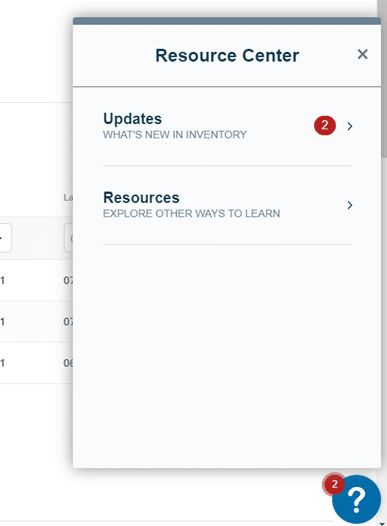
Electronic Health Record: Force Sync
Relevant to ESO EHR users
The new Electronic Health Record (EHR) Force Sync feature allows EHR administrators to sync a record in mobile status to the web, instead of calling support. For instance, if your tablet is broken, no need to worry. Administrators with the Force Sync permission can find records on the Incident List as well as access them from the Force Sync tab in the Options Menu – saving you time by eliminating phone calls or support cases.
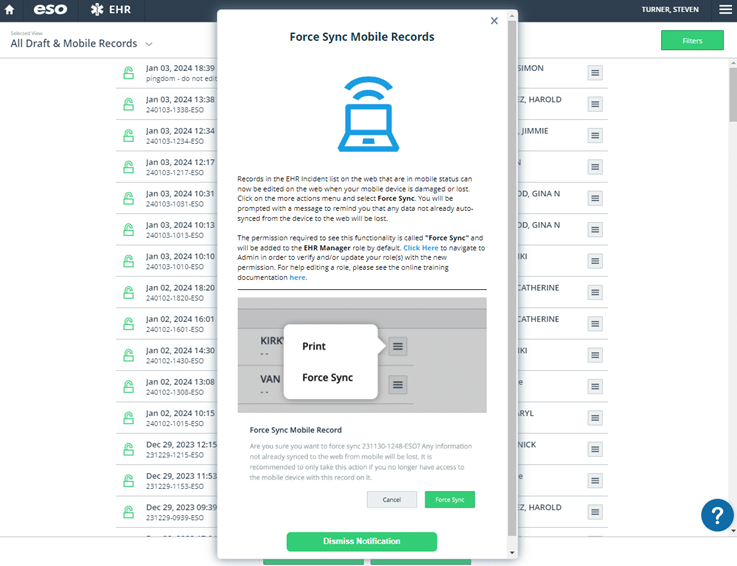
Quality Management: Auto-Assign
Relevant to EMS customers
The brand-new Quality Management (QM) Auto-Assign feature allows admins to automatically assign QM reviews to a specific QM reviewer based off specific criteria, such as patient release disposition, cardiac arrest, or COVID calls. This long-awaited feature was requested by large and small agencies alike and will help automate and streamline previously manual workflows.
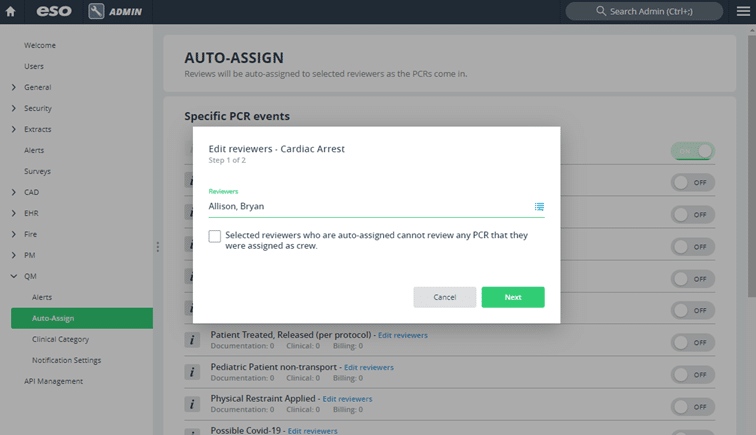
Inspections: Reinspection Workflow
Relevant to Fire customers
For our fire customers, the new workflow for Reinspection now captures the parent inspection’s violation information and allows for violations to be properly “resolved.” This new workflow will help reduce the complexity and frustration caused by the previous manual interventions needed.
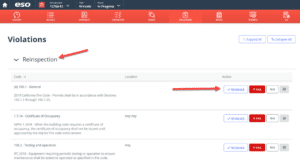
Fire Incidents: Configurable Validations
Relevant to Fire customers
We added several new configurable validation rules to Admin so users can determine whether to require certain fields, such as:
- Exposure and Decontamination Conditionally Required
- Unit Arrival Time Always Required
- Unit Clear Time Always Required
- Unit Dispatch Always Required
- Unit Enroute Time Always Required
This update is the direct result of customer configurability requests. In particular, the validation for exposure and decontamination is part of the industry-wide effort to improve data collection for firefighter cancer research being done by groups like NIOSH and ESO’s own RPi team (Discrepancies in Firefighter Decontamination Practices).
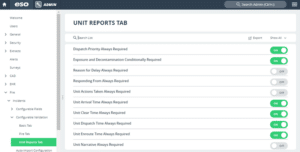
Patient Registry Launch
Relevant to Hospital customers
In Q4/2023, we partnered closely with our ESO Registry Beta customers to refine our new best-in-class Patient Registry product. We improved the user workflow for Performance Improvement processes, refined our data quality validations, and created the first set of out–of–the–box Insights dashboards. The onboarding process for customers in our Early Adopter program will begin this quarter.
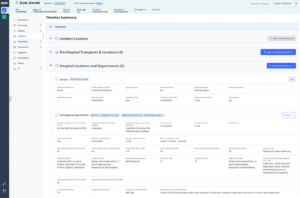
Health Data Exchange: Hospital Insights
Relevant to Hospital customers
The new Health Data Exchange (HDE) Insights dashboards give Hospital users an unprecedented, broadened view of EMS data. You’ll now have the flexibility to get ready-to-use dashboards that surface critical information on your EMS volume, off-load times and service line specific performance metrics. These reports will dramatically reduce manual effort to report on monthly EMS arrivals. With one click, service line leaders can analyze volume trends, produce EMS accreditation measures and identify opportunities for performance improvement and injury prevention by transport agency and/or community.
Users can customize the dashboard to suit your specific needs. Data from the specific reports within the dashboards can be emailed to key decision makers within your facility to keep everyone informed of how your facility is performing.

Health Data Exchange: EHR Insights
Relevant to EMS customers
Integrating Insights with HDE Outcomes data in our HDE EHR system marks a significant leap forward. Between Insights’ many features and Outcomes’ data model, you can expect enhanced data analysis capabilities, along with a more holistic view of operations and outcomes.
State EMS Operational Reports
Relevant to State and Government customers
The EMS State Repository product has been updated to include Data Quality Charts and Monthly Submission Reports. This will allow state data managers to now use powerful visualization tools to monitor the information flow into their repositories and identify which EMS agencies have been helpful in complying with regulatory requirements. These operational reports will increase the quality of data a state has to benchmark and improve community health and safety.
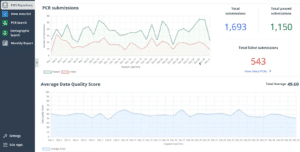
Activities: Rostering
Relevant to Fire customers
Another update inspired by customer feedback, Rostering allows users to create a daily roster that syncs incidents in ESO Activities. This slick new tool makes it easy for officers to quickly spin up the roster for the day, see the right crews on the right reports, and log it within the Activities Logbook. Given Activities is the operational hub for task management in ESO Suite, the inclusion of Rostering further rounds out key Activities functionality.
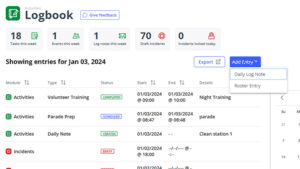
ODL: Upload Your Own Content
Relevant to all ESO customers
In Customers can now upload their own training content to ODL! With this new feature, customers have the ability to put their own training content alongside ESO’s, creating a single repository for all training material. This alleviates a few challenges in the old system, including accessibility and log-in requirements.
What to expect in Q1 2024?
We have a few more exciting enhancements in the works for early 2024. Please stay tuned for release notes and the next product blog, but here’s a sneak preview of a few updates we have planned:
EMS
- More critical care related treatments and forms in EHR
- QM data in Insights
Fire
- New Permits & Hydrants in Insights
- Inspections Print Updates
- IRWIN Integration
- Properties External API
Shared Apps
- New PM & Activities reporting in Insights
- New Inventory Controlled Substances reporting in Insights
- Equipment ID & Nested Checklist items
Hospital
- Patient Registry compliance in Early Adopter states
- PRQ & Audit Insights Dashboards
- HDE Discrete Cancellation Message
Cross-Product / ESO Suite
- In-App Customer Feedback
- Enhancements for self-service Onboarding Guide to make it more usable to customers upgrading to ESO Suite from acquired applications
- Federated Single-Sign On using SAML 2.0 (please note that for now this excludes agencies using EHR Windows Mobile)
- Premium Dashboards incl. GIS/Mapping
- Enhancements to Data Exporter
To see these enhancements in action, learn more about the ESO product roadmap, or speak directly with one of our product experts, be sure to join us at Wave 2024 featuring ESO Training Academy from April 2-5 in Austin, Texas. Register today to secure your spot!
Want to see the updates from Fall 2023? Visit the previous blog here.
About Product Management at ESO
The Product Management team creates the Product Roadmap, which includes deciding on which products, features, and functionality we build out next. We collaborate daily with support, sales, customer success, our industry experts and executives, and most importantly with our customers and users to find out how we can best advance ESO’s mission of improving community health and safety through the power of data.
Among many other initiatives, we’re currently working on ways to engage with you, our users, more deeply. Following the implementation of the in-app Resource Center, we’re now experimenting with ways to get customers to submit ideas and provide feature enhancement requests in-app. This will provide us with more visibility, a better ability to triage and categorize requests, and a means to communicate back to you, our users, on what we’re working on and why.
Stay tuned for more exciting updates in the coming weeks as we continue our journey to enhance your experience with ESO products!
The post (Q4/23) ESO Updates: Quarterly Product Enhancements appeared first on ESO.
]]>